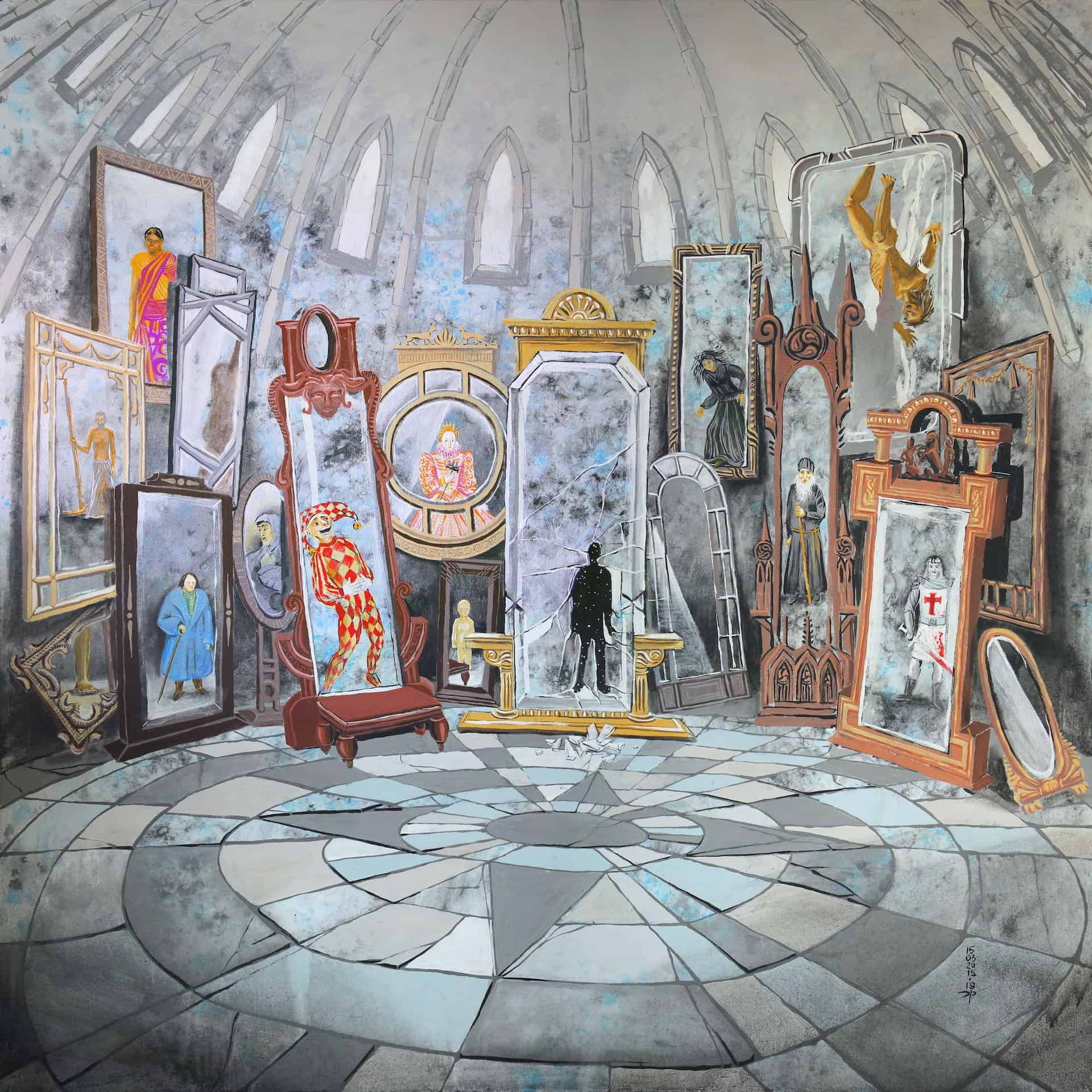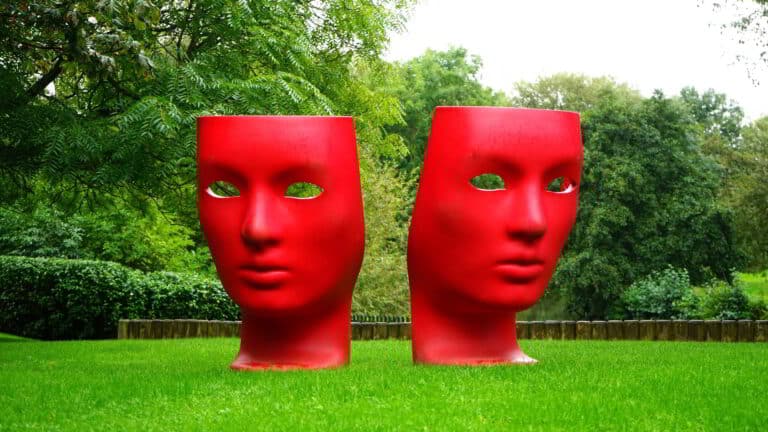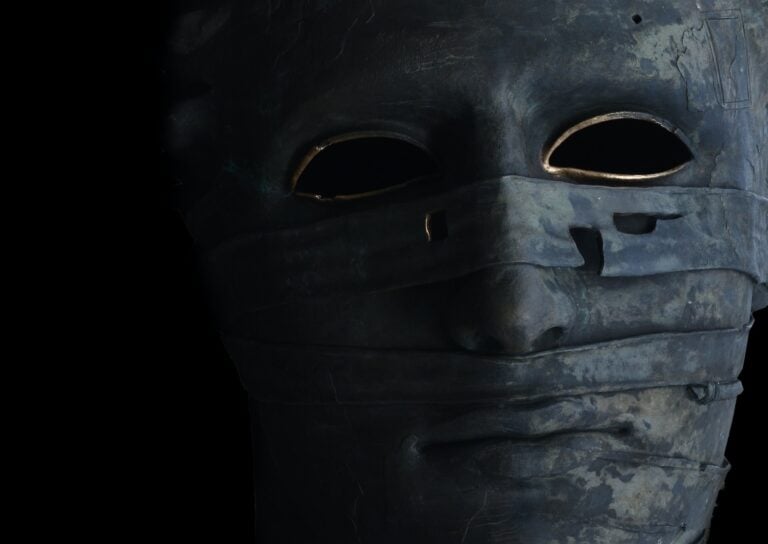Unveiling Enneagram: A Guide to Character Archetypes in Fiction
Demystify the art of character creation in fiction with the powerful tool of Enneagram, a dynamic system that offers nine distinct personality archetypes.
Introduction: Embracing the Enneagram
Crafting believable characters in fiction is both an art and a science. A vibrant character is more than just a confluence of traits; they’re an entity imbued with desires, fears, and complex emotions. Enter the Enneagram, an intricate system of nine interconnected personality types. It’s not just a tool for self-discovery, but a treasure trove for fiction writers keen on creating nuanced characters.
The Power of Nine: Understanding Enneagram Types
The Enneagram system offers nine unique personality archetypes. Each type has its own set of strengths, weaknesses, core fears, and desires. This diversity makes it a handy tool for writers to shape their characters.
The Perfectionist (Type 1)
“Perfection is not attainable, but if we chase perfection we can catch excellence.” – Vince Lombardi
The Perfectionist strives for an ideal world. They’re principled, orderly, and meticulous, often battling an inner critic. In fiction, these characters can provide a moral compass or drive a narrative with their relentless pursuit of perfection.
The Helper (Type 2)
“The best way to find yourself is to lose yourself in the service of others.” – Mahatma Gandhi
The Helper is motivated by a need to be loved and appreciated. They’re caring, generous, and people-pleasing, often struggling with boundaries. In stories, these characters often play supportive roles, offering emotional depth and conflict.
The Achiever (Type 3)
“Success is not the key to happiness. Happiness is the key to success. If you love what you are doing, you will be successful.” – Albert Schweitzer
The Achiever is success-oriented and image-conscious. They’re adaptable, efficient, and fear being unworthy. These characters can be highly driven protagonists or complex antagonists, providing a lens to explore themes of ambition and authenticity.
The Individualist (Type 4)
“The privilege of a lifetime is to become who you truly are.” – Carl Jung
The Individualist values authenticity and self-expression. They’re introspective, sensitive, and fear being insignificant. Such characters offer rich emotional landscapes and often drive narratives with their quest for identity.
The Investigator (Type 5)
“The important thing is not to stop questioning. Curiosity has its own reason for existence.” – Albert Einstein
The Investigator seeks knowledge and autonomy. They’re perceptive, innovative, and fear being incompetent. These characters can play various roles, from the wise mentor to the eccentric scientist, enriching narratives with their intellectual depth.
The Loyalist (Type 6)
“Loyalty means nothing unless it has at its heart the absolute principle of self-sacrifice.” – Woodrow Wilson
The Loyalist values security and loyalty. They’re responsible, anxious, and fear being unsupported. These characters often offer reliability in narratives and can bring tension with their anxieties.
The Enthusiast (Type 7)
“The purpose of life is to live it, to taste experience to the utmost, to reach out eagerly and without fear for newer and richer experience.” – Eleanor Roosevelt
The Enthusiast craves excitement and satisfaction. They’re spontaneous, scattered, and fear being deprived. They can bring energy, optimism, and a zest for life to any narrative.
The Challenger (Type 8)
“The ultimate measure of a man is not where he stands in moments of comfort and convenience, but where he stands at times of challenge and controversy.” – Martin Luther King Jr.
The Challenger exudes self-confidence and resilience. They’re protective, confrontational, and fear being controlled. These characters can serve as powerful protagonists or formidable antagonists, driving the narrative with their assertive nature.
The Peacemaker (Type 9)
“Peace is not merely a distant goal that we seek, but a means by which we arrive at that goal.” – Martin Luther King Jr.
The Peacemaker seeks inner and outer peace. They’re easygoing, complacent, and fear conflict. These characters often provide a calming presence in the narrative and can challenge readers to explore themes of peace and complacency.
Conclusion: Enneagram in Action
The Enneagram system offers a rich tapestry of character possibilities. As a writer, it can guide you in creating multi-faceted characters, breathing life into your narrative. Remember, these archetypes are starting points, and your characters can embody elements from multiple types. So, embark on this journey of character creation, armed with the Enneagram, and let your characters tell their stories.
FAQs about the Enneagram, Fiction Writing, and Characters
How Can I Use Enneagram for Character Development?
Answer: The Enneagram can guide you in shaping your characters’ motivations, fears, and desires. By understanding each type, you can create more nuanced and relatable characters, enriching your narrative.
Can Characters Exhibit Traits From Multiple Enneagram Types?
Answer: Yes, characters, like real people, can exhibit traits from multiple Enneagram types. This can add depth and complexity to your characters, making them more realistic and relatable.
How Can I Determine My Character’s Enneagram Type?
Answer: Consider your character’s core motivations, fears, and desires. This introspective analysis can help identify which Enneagram type or types best fit your character.
What is the Enneagram in terms of character development?
Answer: The Enneagram is a model of human personality often used in psychology. It consists of nine interconnected personality types that can provide a framework for character development in writing, helping to create diverse, realistic, and complex characters.
How can Type 1, the Perfectionist, be portrayed in a character?
Answer: A character embodying Type 1, the Perfectionist, may be principled, self-controlled, and purposeful. They could strive for improvement and struggle with resentment or self-criticism when they or others don’t meet their high standards.
What character traits might Type 2, the Helper, exhibit?
Answer: A character representing Type 2, the Helper, may be warm, caring, and generous. They may derive their self-worth from being needed and struggle with acknowledging their own needs.
How can Type 3, the Achiever, influence a character’s motivations?
Answer: A character embodying Type 3, the Achiever, may be driven by a desire to succeed and to be admired. They may be adaptable and efficient but also struggle with image-consciousness and authenticity.
How can Type 4, the Individualist, shape a character’s inner world?
Answer: A character with Type 4, the Individualist, may have a rich, complex inner world, marked by a longing for uniqueness and a deep understanding of their own emotions. However, they may also grapple with feelings of inadequacy or envy.
How can Type 5, the Investigator, be depicted in a character’s personality?
Answer: A character with Type 5, the Investigator, may be perceptive, innovative, and private. They may seek to understand the world around them and may struggle with detachment or isolation.
Can Type 6, the Loyalist, be a protagonist in a story?
Answer: Yes, a protagonist embodying Type 6, the Loyalist, can lead a compelling narrative. Their loyalty, commitment, and sense of responsibility can drive the plot, while their struggle with anxiety and doubt adds complexity to their character.
How can Type 7, the Enthusiast, contribute to a narrative?
Answer: A character embodying Type 7, the Enthusiast, can contribute to the narrative with their spontaneous, versatile, and optimistic nature. Their desire to avoid pain and their struggle to commit can lead to interesting story developments.
Can an antagonist character embody Type 8, the Challenger?
Answer: Yes, an antagonist can embody Type 8, the Challenger. This character could be self-confident, decisive, and confrontational, creating dynamic conflicts within the story.
How can Type 9, the Peacemaker, be portrayed in a narrative?
Answer: A character with Type 9, the Peacemaker, may strive for peace and harmony, going to great lengths to avoid conflict. This can create interesting tension in a narrative, especially when conflict is inevitable.
How does the Enneagram inform a character’s motivations?
Answer: The Enneagram provides insight into a character’s core desires and fears, which can inform their motivations. For example, a Type 3 character may be motivated by a desire for success, while a Type 6 character may be driven by a need for security.
Can a character’s Enneagram type change during a story?
Answer: While a character’s core Enneagram type generally remains consistent, their behavior can change significantly as they grow and face different circumstances. This might manifest as movement along their type’s lines of integration or disintegration, reflecting personal growth or stress.
How can understanding the Enneagram enhance a writer’s storytelling abilities?
Answer: Understanding the Enneagram can provide writers with a deep understanding of human personality, enhancing their ability to create complex, believable characters. This can result in more engaging and emotionally resonant stories.
Can the Enneagram assist in creating dynamic character conflicts?
Answer: Yes, the Enneagram can help create dynamic character conflicts. Differences in Enneagram types can lead to misunderstandings and clashes, while similarities can result in competition or tension.
How does a character’s Enneagram type influence their relationships with other characters?
Answer: A character’s Enneagram type can greatly influence their relationships. It can determine how they relate to others, what they seek in relationships, and how they respond to conflict, creating diverse and complex interpersonal dynamics.
How can the Enneagram contribute to a character’s internal conflict?
Answer: The Enneagram can provide insight into a character’s internal conflicts. Each type has its own fears and desires, which can clash and create inner turmoil. For example, a Type 2 character might struggle with balancing their desire to help others and their need to care for themselves.
How can a character’s Enneagram type influence their reaction to plot events?
Answer: A character’s Enneagram type can shape how they react to plot events. For instance, a Type 7 character might try to maintain a positive outlook in the face of adversity, while a Type 4 character might dwell on the emotional implications of the event.
Can the Enneagram be used to develop non-human characters?
Answer: Yes, the Enneagram can be used to develop non-human characters. By assigning an Enneagram type to a non-human character, writers can create distinct personalities and motivations that make these characters more relatable and compelling.
How can understanding the Enneagram improve a writer’s ability to write dialogue?
Answer: Understanding the Enneagram can help writers craft dialogue that is true to their characters’ personalities. Each Enneagram type has its own way of seeing the world and communicating, which can be reflected in a character’s dialogue.
Can the Enneagram be applied to characters in any genre of fiction?
Answer: Yes, the Enneagram can be applied to characters in any genre of fiction. Whether you’re writing a fantasy epic, a romance novel, or a sci-fi thriller, the Enneagram can help you create characters that are complex, believable, and engaging.
How can a character’s Enneagram type influence the story’s resolution?
Answer: A character’s Enneagram type can influence the story’s resolution by shaping how they respond to the story’s climax and resolve their conflicts. For example, a Type 9 character might seek a peaceful resolution, while a Type 8 character might confront the conflict head-on.
Can a character’s Enneagram type be ambiguous or open to interpretation?
Answer: Yes, a character’s Enneagram type can be ambiguous, particularly in complex narratives or with multifaceted characters. The interpretation may depend on the reader’s perspective or on different aspects of the character’s personality and actions.
Can a character embody multiple Enneagram types?
Answer: While a character typically has one dominant Enneagram type, they can also display traits of other types. This is often represented by the lines and wings in the Enneagram model, reflecting the complexity and fluidity of human personality.
How can the Enneagram inform a character’s backstory?
Answer: The Enneagram can provide insight into a character’s backstory by revealing their core motivations, fears, and desires. This can help writers understand why a character might have developed certain traits or behaviors.
How can the Enneagram assist in creating diverse character casts?
Answer: The Enneagram, with its nine distinct types, can assist in creating diverse character casts. By assigning different Enneagram types to different characters, writers can ensure a wide range of personalities and perspectives are represented.
Can the Enneagram be used to develop character arcs?
Answer: Yes, the Enneagram can be used to develop character arcs. By understanding a character’s Enneagram type, writers can predict how they might grow and change in response to the events of the story.
How can Type 1, the Perfectionist, respond to failure in a narrative?
Answer: A character embodying Type 1, the Perfectionist, may respond to failure with self-criticism or frustration. They may see it as a call to improve or a sign that they need to work harder.
Can Type 2, the Helper, be an antagonist in a story?
Answer: Yes, a Type 2, the Helper, could become an antagonist in a story. They could be overly possessive or manipulative, offering help with strings attached or becoming resentful when their help is not appreciated or reciprocated.
How can Type 3, the Achiever, react to success in a story?
Answer: A Type 3, the Achiever, might react to success with satisfaction and validation. However, they might also worry about maintaining their success or feel empty if it doesn’t bring the fulfillment they expected.
How can Type 4, the Individualist, handle rejection in a narrative?
Answer: A character with Type 4, the Individualist, may handle rejection with intense emotion, potentially retreating into their rich inner world or feeling amplified feelings of inadequacy or uniqueness.
How can Type 5, the Investigator, be portrayed in a romantic subplot?
Answer: In a romantic subplot, a Type 5, the Investigator, might approach relationships with curiosity and caution. They might struggle with emotional intimacy, but also offer a deep, intellectual connection.
How can Type 6, the Loyalist, deal with betrayal in a story?
Answer: A Type 6, the Loyalist, might deal with betrayal with anxiety and doubt, potentially leading to either further skepticism or an intensified desire for security and loyalty.
Can Type 7, the Enthusiast, contribute to comic relief in a narrative?
Answer: Yes, a Type 7, the Enthusiast, with their spontaneous and optimistic nature, can contribute to comic relief in a narrative. Their upbeat energy and desire to avoid pain can lead to humorous situations and dialogue.
Can Type 8, the Challenger, be a mentor figure in a story?
Answer: Yes, a Type 8, the Challenger, can serve as a mentor figure in a story. They could provide guidance and support with their self-confidence and decisiveness, challenging the protagonist to confront their fears and stand up for themselves.
How can Type 9, the Peacemaker, resolve conflicts in a narrative?
Answer: A character embodying Type 9, the Peacemaker, may strive for a peaceful resolution to conflicts, seeking compromise and harmony. They might also suppress or ignore conflicts, which could lead to interesting narrative tension when such avoidance is no longer possible.
Can understanding the Enneagram make a writer more empathetic?
Answer: Yes, understanding the Enneagram can make a writer more empathetic by providing insight into different ways of thinking and feeling. This empathy can translate into more nuanced and emotionally resonant characters and narratives.
Can the Enneagram guide a writer in exploring a character’s strengths and weaknesses?
Answer: Absolutely, the Enneagram can guide a writer in exploring a character’s strengths and weaknesses. Each Enneagram type has its own set of potential strengths and pitfalls, which can be used to build a character’s personality and development.
How does the Enneagram affect a character’s worldview?
Answer: The Enneagram can greatly affect a character’s worldview. Each Enneagram type perceives and interacts with the world in a unique way, influencing their beliefs, values, and actions.
Can the Enneagram help in writing more realistic dialogue?
Answer: Yes, the Enneagram can help in writing more realistic dialogue. By understanding a character’s Enneagram type, a writer can better understand how they might communicate, what they might say, and how they might react in conversation.
Can the Enneagram assist in writing dynamic and engaging character interactions?
Answer: Yes, the Enneagram can assist in writing dynamic and engaging character interactions. By understanding the strengths, weaknesses, motivations, and fears of each Enneagram type, writers can create complex and meaningful interactions between characters.
How can the Enneagram contribute to a character’s growth over the course of a story?
Answer: The Enneagram can contribute to a character’s growth by providing a framework for understanding their motivations and potential paths of development. As the character faces challenges and experiences, they can grow and evolve in ways that are consistent with their Enneagram type.
Can a character’s Enneagram wing influence their behavior?
Answer: Yes, a character’s Enneagram wing can significantly influence their behavior. The wing represents the adjacent type that a character also exhibits traits from, adding an additional layer of complexity to their personality.
How can the Enneagram assist in writing characters with depth and complexity?
Answer: The Enneagram provides a robust framework for understanding human personality, which can assist in writing characters with depth and complexity. By considering a character’s core motivations, fears, and desires, writers can create characters that are multifaceted and relatable.
Can the Enneagram be used to create compelling character dynamics?
Answer: Absolutely, the Enneagram can be used to create compelling character dynamics. By understanding how different types might interact, writers can create a variety of interesting and complex relationships.
How can the Enneagram assist in crafting a satisfying character arc?
Answer: The Enneagram can assist in crafting a satisfying character arc by providing insight into a character’s potential paths of growth and development. This can help the writer envision how the character might change and evolve in a satisfying and believable way over the course of the story.
How does the Enneagram influence a character’s emotional reactions?
Answer: The Enneagram can influence a character’s emotional reactions by providing insight into their core motivations and fears. Each type has its own emotional focus, which can shape how a character might respond to different situations.
Can the Enneagram guide a writer in crafting a character’s decision-making process?
Answer: Yes, the Enneagram can guide a writer in crafting a character’s decision-making process. Each Enneagram type has a unique approach to making decisions based on their core motivations, fears, and desires.
How can the Enneagram be used to create unique character voices?
Answer: The Enneagram can be used to create unique character voices by informing how characters might express themselves based on their type. For example, a Type 8 character might have a direct and assertive voice, while a Type 4 character might express themselves in a more introspective and emotional manner.
Can the Enneagram help a writer avoid cliched characters?
Answer: Yes, the Enneagram can help a writer avoid cliched characters. By providing a deep understanding of different personality types, the Enneagram can assist writers in creating characters that are complex, unique, and authentic.
Can the Enneagram be applied to group dynamics in a narrative?
Answer: Absolutely, the Enneagram can be applied to group dynamics in a narrative. By understanding how different Enneagram types might interact, writers can craft nuanced and dynamic group interactions, contributing to a more engaging and believable narrative.
Keywords: Enneagram, character archetypes, fiction writing, character development, personality types, storytelling, narrative, character creation






